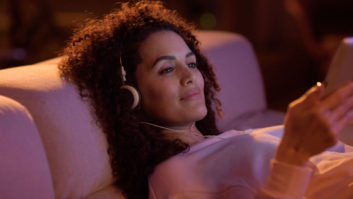Paddy Taylor, head of broadcast, MRMC, talks to TVBEurope about the adoption of camera robotics in media production, and how the industry will continue to see the boundaries of image capture being pushed within traditional production setups.
What industry trends have particularly stood out for you in 2023, and why?

Camera robotics continue to become a mainstay within the broadcast industry, and the use case for their application continues to grow. Throughout 2023 our customers have demonstrated just how integral camera robotics solutions can be in enhancing creativity and levels of production. Working with some key partners, we are really starting to test the limits of what robotic solutions can deliver.
What impact are you seeing those trends having on the media and entertainment industry?
The overarching value of camera robotics is well understood, for example how they increase workflow efficiency. But there is an instilled fear that camera robotics are here to replace people. In practice, however, we are hearing more from the operators on how these tools are helping them to enhance their production experience and allowing them to push boundaries in the types of shot they can capture. This understanding is now expanding beyond traditional broadcast and sports productions, to houses of worship, entertainment and corporate AV,
How do you see those trends developing further in 2024?
We will continue to see the boundaries of image capture being pushed within traditional production setups. The level of quality that can now be achieved when syncing camera robotics with virtual production systems will set a new standard, but one that can be reached in a range of ways that are actually very accessible.
Do you expect to see any new trends within the industry in 2024, and what will they be?
I think in 2024 we’ll see the use of full-frame single-sensor cameras becoming widely adopted in broadcast studios and OB productions. 2/3-inch sensor cameras have been the standard for many years but can’t match the quality provided by full-frame sensor cameras. With the ability to support dynamic range and exceptional low-light performance full-sensor cameras allow broadcasters to elevate the quality of their content, even more so when paired with motion provided by agnostic camera robotics.







